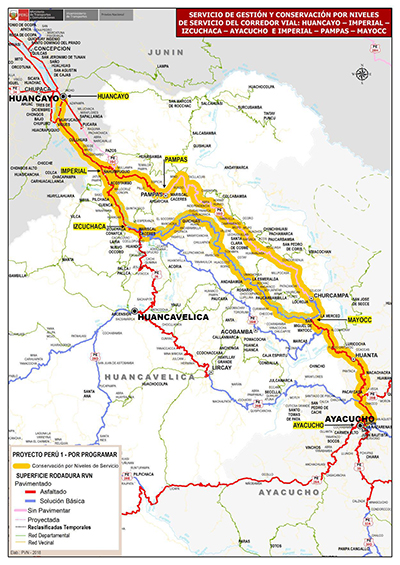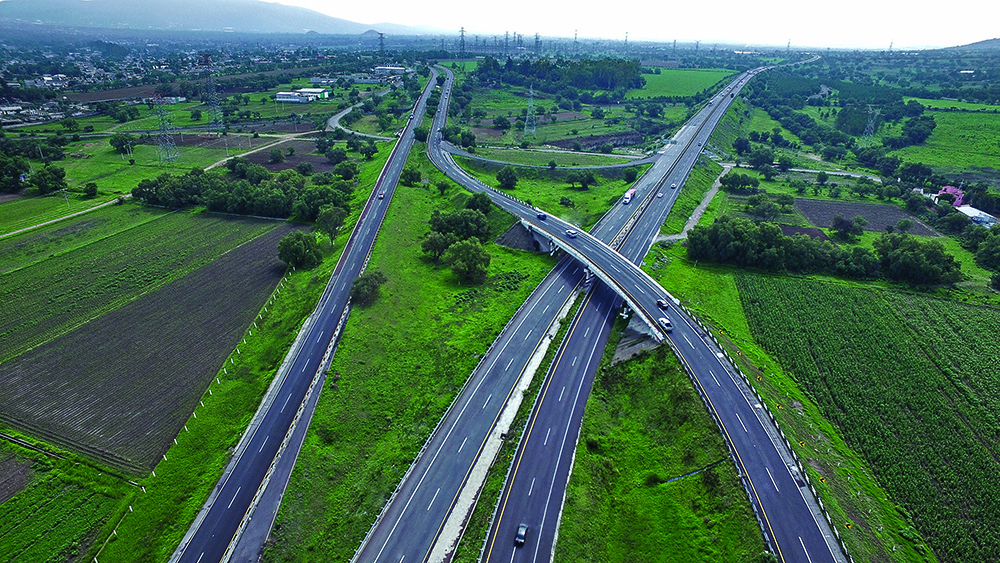Sacyr reached an EBITDA of €543 million in 2018, up 29% compared to the previous financial year. The net profit stood at 150 million euros last year, up 15% compared to 2017.
This strong growth asserts the success of the strategy undertaken by Sacyr in 2015, which focused on profitability, financial discipline, international expansion and the diversification of business areas.
The four divisions of Sacyr increased their EBITDA during 2018: Engineering and Infrastructure (+82%); Concessions (+17%); Services (+14%); and Industrial (+5%). Business profitability, measured by the EBITDA margin, has grown, yet another year, from 13.7% to 14.3% in 2017.
Turnover growth
Sacyr’s turnover stood at 3,796 million euros (+23%), of which 60% came from international markets.
This double-digit growth is a result of the success in contracting registered by all business areas during the last financial years.
Income backlog
The future income backlog closed the year at 41,674 million euros (+2%). The backlog reflects the strong internationalization of the company: 71% is already located outside Spain.
By geographical areas: America represents 38% of the portfolio, Europe 59% and 3% is located on other continents.
And by activities, in Infrastructure, international contracts accounted for 88% of the total, 82% in Concessions, 29% in Services, and 11% in Industrial.
During 2018, the company won large projects in all its divisions. Among them, it is worth noting the remodeling of Uruguay’s central railway, the construction of the Fortaleza Subway (Brazil) and the first four contracts of the construction subsidiary in the USA for a total of 318 million. The entry into the North American country was one of the most important milestones of the Strategic Plan.
Financial debt
The group’s pro forma net debt is set at 4,046 million euros. Over 70% of the debt is linked to concession projects.
The strength of the results and the positive performance of the company's businesses mark the return to a regular dividend policy.
In 2018, the company issued two scrip dividends, which totaled 0.103 euros per share.
Compliance with the Strategic Plan
Sacyr closes 2018, the fourth year of the 2015-2020 Strategic Plan, with the objectives met and with new goals for 2020.
Since the launch of the Strategic Plan, the EBITDA of the multinational company has experienced an accumulated annual growth of 23%, while the net result and operating cash flow have increased, respectively, 46% and 76% annually.
The company has moved forward its focus on the concessional business, and 75% of EBITDA already comes from concession assets.
For the 2019-2020 biennium, the company renews its goals:
• Continuous and sustainable growth in the concessions business to achieve the goal that more than 85% of cash flows are recurrent and stable.
• Consolidation in domestic markets and selective growth in the Anglo-Saxon market (USA, Canada, Australia and United Kingdom).
• Selection of projects with cash generation and profitability criteria.
• Strict financial discipline and reduction of debt with recourse.
• Innovation and technology to achieve technical excellence.
• Sustainability and technological leadership in the circular economy.
• Maximizing value for the shareholder.
Change by business area
Engineering and Infrastructure. - The turnover of this division totaled 1,713 million euros, with a growth of 40%, on the back of both international (+46%) and national (+12%) activity. International turnover represents 85% of the total.
The division's EBITDA increased 82% to €168 million and the EBITDA margin improved to 9.8%, compared to 7.6% in the last financial year.
Contracts for new projects made a record 1,950 million euros, 33% more than in 2017. Hence, the infrastructures backlog reached 6,183 million euros, representing 43 months of activity. 88% of the backlog is located outside Spain.
Notable contracts are: the first four contracts for the company in the United States; the first phase of the Fortaleza Subway (Brazil); the construction of a stretch of highway A6 in Northern Ireland; the construction of the Alto Hospicio and Villarica hospitals in Chile and San Alejandro de Cholula hospital in Mexico.
Concessions.- Sacyr Concessions recorded revenues of €793 million, 29% higher than in 2017. Of the total, €432 million came from concession revenues, which grew 21% as a result of the start of the Antofagasta Hospital operations and the Rutas de Limari highway, both in Chile, and the improvement in highway traffic figures. The remaining €361 million (+40%) are from construction revenue, which grew thanks to the works in Peru, Uruguay, Paraguay, Colombia and Mexico.
EBITDA reached €272 million, up 17%.
The backlog of future revenue reached €27.081 million, with its international business accounting for 82% of this figure.
The group obtained its first airport concession in Chile in Puerto Montt and it opened the Limarí Route, also in Chile.
After the close, the group was selected for the construction and operation of the Central Railroad in Uruguay and in Chile, the section of Route 5 between Los Vilos and La Serena and the Chacatulla airport in Arica.
It also concluded the financing of its two concession projects in Mexico (Tlahuac Hospital and the Pirámides-Pachuca Highway), the first phase in the financing of the Rumichaca-Pasto y Montes de María highways in Colombia and the refinancing of the Guadalmedina highway in Spain.
Services.- The turnover of this division grew 13%, to €1,075 million, owing to the positive change in all its business areas: Environment had a turnover of 439 million euros (+12%), Multiservice, 508 million euros (+14%) and Water, 124 million euros (+8%).
Generated EBITDA by Sacyr Services reached €95 million, up 14% compared to 2017. The EBITDA margin remained at 8.8%.
The Services backlog totaled €5,899 million, 29% of which came from international contracts.
During the past year, the company reached some important milestones, such as the management of the complete water cycle of Sotogrande (Cádiz, Spain); the waste collection, street cleaning, maintenance of green areas and transport of waste in Bogotá; the street cleaning and waste collection from Melilla, Lérida, Barakaldo (Vizcaya) and Arona (Santa Cruz de Tenerife); the cleaning and maintenance of lines 2 and 6 of the Santiago de Chile Subway and lot 3 of the Madrid Subway; and the home assistance service in the Community of Madrid and in the provinces of Valladolid, Ávila and in the city of Burgos.
Industrial.- The revenue of the Industrial division reached €527 million (+1%) and EBITDA totaled 36 million (+5%).
The growth posted in the year is due to the increase in the company’s activity, especially in the industrial plant, electrical and water infrastructures areas.
The industrial division's backlog was €2,511 million, an 8.7% increase over the same period in 2017. 11% of the backlog is international.
During 2018 major projects were contracted during the period, such as the construction of a fuel storage and distribution terminal in Mollendo (Peru), the construction of photovoltaic plants in Spain and the third water project in Australia, which consists of the design and construction of a water treatment plant for agricultural use in Adelaide and three photovoltaic solar plants in Ciudad Real.







